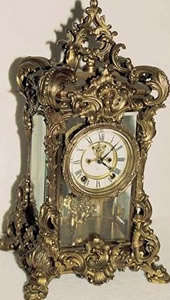An Overview Of Statue Clock
Figural clocks, now known as statue clocks, feature representations of people, animals, or mythical beings. Internationally, France was the most significant manufacturer of these clocks. Within the United States, the Ansonia Clock Company was the early leader. New Haven statue clock w/cupid, gilded metal, 30-hour, time only, 5×6 1/2″ h. $350.


